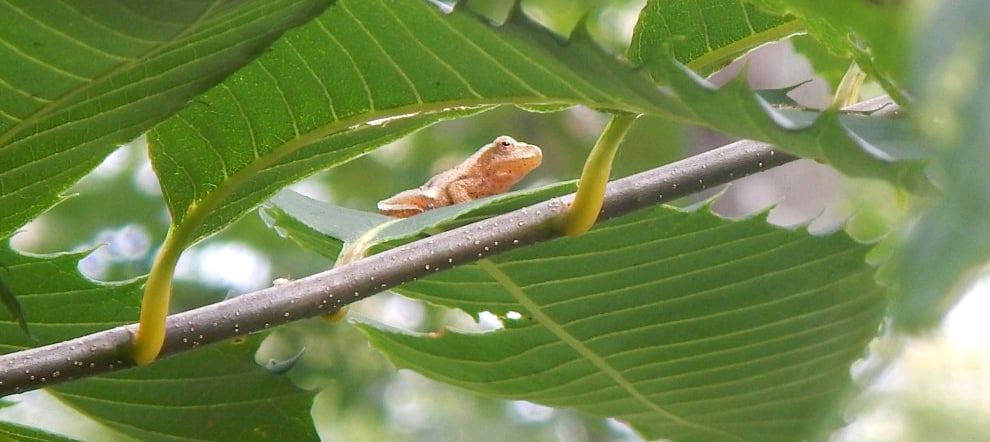Share this article
Online course explores American chestnut’s iconic role
When exotic diseases wiped out the American chestnut, it transformed forests across the eastern United States and impacted wildlife in ways we may never understand.
“We don’t know exactly how important the chestnut was because it died out before we had modern wildlife and forestry research,” said Stacy Clark, a research forester at the U.S. Forest Service’s Southern Research Station in Knoxville, Tennessee.
Black bears (Ursus americanus) likely relied on the proteins and carbohydrates packed into the trees’ nuts. Extinct species like the passenger pigeon (Ectopistes migratorius) and Carolina parakeet (Conuropsis carolinensis) likely roosted in its branches.
“I think it really affected the food web,” Clark said.
Clark has developed an online course, An Introduction to the American Chestnut, exploring the iconic tree’s biology and the factors that led to its demise. Estimated to take about an hour, the course includes interactive links to scientific literature, videos, web sources and dendrology tables. The course qualifies for one continuing education credit from TWS.
“I think it’s a good way to communicate and get people educated,” Clark said. “People can read scientific journals. But let’s face it — a lot of managers don’t really want to do that. They want to talk to a researcher, have one-on-one interaction or have some kind of synthesized brief. I thought this would be a good way to do it because it’s interactive. You’re not just reading a publication.”
The American chestnut was once a dominant tree in the U.S., occupying 200 million acres from Maine to Mississippi. Valued for its nuts and its timber, it was important culturally and economically in addition to its ecological role as a keystone species. As many as 4 million trees grew across the region, comprising up to half the forest canopy in part of the southern Appalachians.
And then it was gone. Two exotic diseases wiped out the chestnut across its range. First, a root rot arrived, likely in the early 1800s, decimating trees as far north as Pennsylvania. A century later, chestnut blight disease had taken hold, killing off nearly all the trees. Oak, hickory, maple and other trees took their place, and the region’s forests have never been the same.
“You can still find remnants of chestnuts out in the woods,” Clark said. “There are thousands of them, but they don’t usually get very big.”
Some of the remaining trees may have blight resistance, though, and that could offer hope for restoring the American chestnut to the landscape. Efforts are underway to develop a blight-resistant stock that could bring the tree back to the forest — the subject of a future online course Clark is planning.
“We’re really making headway, but there’s still a lot of unanswered questions about how to manage these trees,” she said.
The American chestnut isn’t the only tree on the continent that has suffered from exotic threats. Western white pines, hemlocks, beeches and others are facing threats of their own, making the story of the American chestnut particularly relevant.
“There are a ton of trees that are being either extirpated or reduced in their native habitat because of nonnative pests,” Clark said. “The chestnut is one tree, and it was a foundational tree because it was extremely abundant. It probably had an irreplaceable value ecologically. But it’s one tree that we’re probably able to make some progress is restoring back to its native range.”
Click here for more information on the course.
Header Image: A tree frog (Hyla cinerea) perches on the leaf of an American chestnut. Credit: Stacy Clarke








